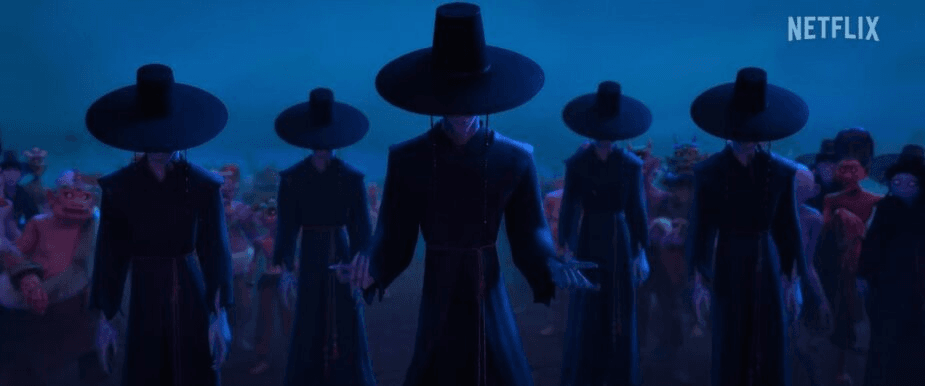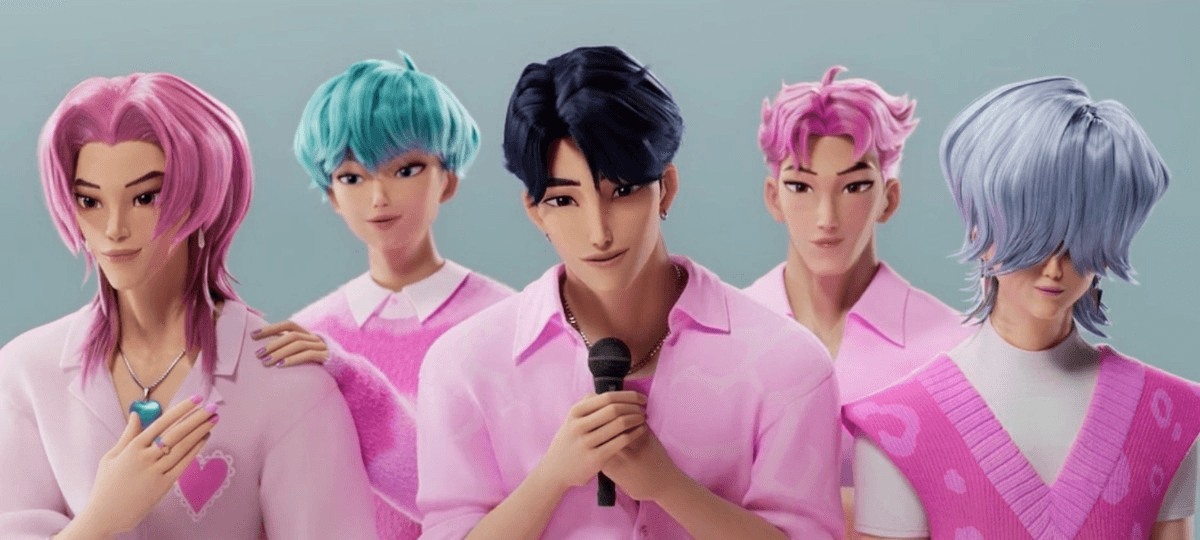「Saja Boys」韓国の意味です
Netflix のアニメ映画「K-Pop Demon Hunters」が大きな注目を集めています。メインの悪役は「サジャボーイズ」というボーイグループで、ファンたちは彼らを愛さずにはいられません。
サジャボーイズは、ヒロインガールグループ HUNTR/X と戦う5人組のK-popグループです。しかし、ここに意外な展開があります。彼らは実際には人間の魂を奪おうとする死神なのです。彼らのロゴにはライオンが描かれていますが、グループメンバーは韓国の死者の使者です。これは韓国語の言葉遊びを見事に表現した巧妙な二重の意味を作り出しています。
グループ名「サジャ(사자)ボーイズ」には、英語圏の人々が見落としがちな多層的な意味があります。韓国語で「사자」は「ライオン(獅子)」と「使者(使者)」の両方を意味します。これは偶然ではなく、彼らの正体を明かす意図的な言葉遊びです。表面的にはライオンのように獰猛に見えますが、実際には冥界からの死の使者なのです。この種の言葉遊びは韓国語でよく見られ、同じ音でも異なる意味を持つ言葉が巧妙な二重の意味のためによく使われます。


ハートブレイカーのような見た目をした死神たち
ジヌ(リーダー) - 超自然的な魅力でサジャボーイズを指揮するカリスマ的リーダー
アビー - グループの筋肉担当で、ファンミーティングで自分の腹筋にサインすることで有名
ベイビー - 中性的な美しさを持つ美少年で、その深いラップボイスがファンを驚かせる
ミステリー - 髪で顔が隠れた謎めいたメンバー
ロマンス - ロマンチックなピンクの分け目を持つビジュアルセンター
彼らは普通の美少年たちではありません。5人全員が主人公さえも恋に落ちそうな完璧な容姿を持っています。また、非常に才能あるパフォーマーでもあります。ファンの前では完璧なアイドルとして振る舞いますが、ファンがいないところではプレゼントを投げ捨て、冷酷で無慈悲な一面を見せます。彼らのメイン楽曲「ソーダポップ」は、非常によく作られていてキャッチーだと注目を集めています。
韓国の死の使者は違う
サジャボーイズが悪役として非常によく機能する理由を理解するには、韓国の神話について知る必要があります。韓国の死の使者(저승사자/チョスンサジャ)は、西洋の死に対する概念とは大きく異なります。多くの人が思い浮かべる恐ろしい死神とは違うのです。
韓国の死の使者には、彼らを興味深い存在にする独特の特徴があります:
規則に従う - 彼らは無作為に魂を奪うことはしません。代わりに、運命の書を注意深くチェックし、本当に時が来た人だけを連れて行きます。彼らは死の混沌とした代理人というより、超自然的なオフィスワーカーのようです。
交渉が可能 - 韓国の民話には、人々が死の使者に食べ物で賄賂を贈ったり、命を延ばすために交渉したりして成功した話がたくさんあります。これらの存在は人間らしく振る舞うため、恐ろしいというより親しみやすい存在になっています。
柔軟性がある - 伝統的な物語では、死の使者が緊急の家族問題のために人々に2〜3日の猶予を与えたり、霊が重要な用事を済ませてから去ることを許したりすることがよく描かれます。
興味深いことに、韓国の死の使者の現代的で人気のあるイメージ(青白い顔に黒い唇、黒い伝統衣装と帽子を着用)は、実際には1970年代にテレビプロデューサーがホラードラマのために作り出したものでした。この比較的最近の外見が標準的なイメージとなり、現代メディアを通じて伝統がどのように変化するかを示しています。
サジャボーイズ:文化の融合
「K-Pop Demon Hunters」は韓国の死の使者を現代のK-popスターとして再想像しています。サジャボーイズはいくつかの文化的概念を表現しています:
二重のアイデンティティパフォーマンス - 実際のK-popアイドルが私生活とは異なる可能性のある公的イメージを注意深く作り上げるのと同様に、サジャボーイズは真の超自然的本質を隠す完璧なパフォーマーです。これはアイドル文化と真正性についての実際の議論を反映しています。
巧妙な文化的言及 - グループのファン名「プライド」はライオンの群れを指し、彼らの名前にあるライオン(사자)と使者(사자)の両方の意味で遊んでいます。これは複数のレベルで機能する言葉遊びです。
プロフェッショナルな欺瞞 - 彼らの完璧なファンサービスとステージプレゼンスは、ファンを欺き害を与えるという真の計画を隠しています。これはアイドル文化における疑似社会的関係についての解説を作り出しています。
この概念は、国際的な観客にとってそれほど奇妙なものではありません。韓国文化は長い間、精神的実践と娯楽を結びつけてきました。「巫女の運命は芸能人の運命のようだ」という古い言葉があり、韓国の民話では「霊は音楽に引かれる」とよく言及されます。この文化的背景により、K-popと超自然的な力の結びつきが自然に感じられます。
When Tradition Meets
伝統が革新と出会うとき
この映画は、秘密に悪魔ハンターとして働きながら、実際には悪魔であるメンバーを持つライバルボーイバンドと戦うK-popガールグループHUNTR/Xを追います。この設定により、伝統的な韓国の超自然的要素が現代のグローバル娯楽文化と共存することができます。
伝統文化は固定されたものではありません。新しい世代のために進化する生きた遺産です。「K-Pop Demon Hunters」は実際の韓国のシャーマニズムについてのドキュメンタリーになろうとしているわけではありません。文化的要素を創造的な構成要素として使用するファンタジーです。この種の現代的な再解釈は、文化的ストーリーテリングが自然に進化する方法を表しています。
サジャボーイズは単なる悪役を超えています。彼らは韓国の伝統文化が、その特別さを失うことなく、グローバルな観客のために創造的に再想像される方法を示しています。彼らの名前の言葉遊び、超自然的起源の文化的深さ、そしてK-popアイドルタイプを完璧に体現する方法は、真正な韓国らしさと普遍的な魅力の両方を持つ悪役グループを作り出しています。
韓国の文化輸出がグローバル娯楽を支配する時代において、サジャボーイズは伝統的要素が創造的ストーリーテリングを制限するのではなく、むしろ向上させることができることを示しています。古代の知恵と現代の創造性が出会うとき、その結果は文化的に意味があり、同時に娯楽性も持つことができることを証明しています。
ファンが実際にこれらの悪役キャラクターに惹かれているという事実は、この文化融合の力を物語っています。彼らは単に憎むべき悪者ではなく、何世紀にもわたる韓国のストーリーテリング伝統に根ざした複雑なキャラクターであり、現代K-popスターダムの派手で魅力的なパッケージに包まれているのです。